This page is based on this
Wikipedia article Text is available under the
CC BY-SA 4.0 license; additional terms may apply.
Images, videos and audio are available under their respective licenses.
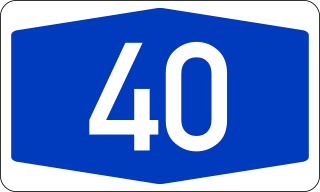
Bundesautobahn 40, is one of the most used Autobahns in Germany. It crosses the Dutch-German border as a continuation of the Dutch A67 and crosses the Rhine, leads through the Ruhr valley toward Bochum, becoming B 1 (Bundesstraße 1) at the Kreuz Dortmund West and eventually merging into the A 44 near Holzwickede.

Bundesautobahn 61 is an autobahn in Germany that connects the border to the Netherlands near Venlo in the northwest to the interchange with A 6 near Hockenheim. In 1965, this required a redesign of the Hockenheimring.

Bundesautobahn 6, also known as Via Carolina is a 477 km (296.4 mi) long German autobahn. It starts at the French border near Saarbrücken in the west and ends at the Czech border near Waidhaus in the east.
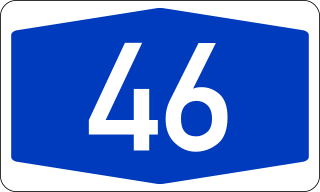
Bundesautobahn 46 is an Autobahn in Germany. It is noncontiguous and split in several parts in the state of North Rhine-Westphalia, an extension to Kassel in Hesse was planned but has been abandoned.
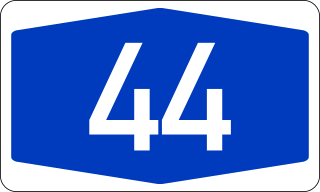
Bundesautobahn 44 is a German Autobahn. It consists of three main parts and a few smaller parts. It begins in Aachen at the German–Belgian border and ends near Kassel. Before the German unification it was an unimportant provincial motorway but after this event it became an integral part of the German highway system. The A 44 is a highly frequented link between the Rhine-Ruhr-Area and the new German states, especially Thuringia, and by proxy, eastern European states like Poland and Ukraine.
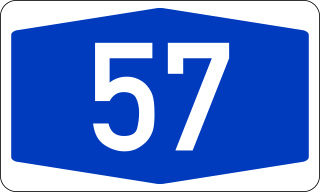
Bundesautobahn 57 is a German Autobahn that begins at the Dutch-German border near Goch and ends in Köln. It runs parallel to the Rhine River. Neuss and Krefeld are the biggest cities at this motorway. The A 57 is continuation of the Dutch A77. Because of its high economic importance, its nickname is "Trans-Niederrhein-Magistrale". Most of it is two lanes each way only and prone to traffic jams in the rush hour. Currently the sections junction 15 - 18, 19 - 24 and 29 - 30 have three lanes each way. The section from junction 28 to 29 southbound has the possibility to open the hard shoulder as a third lane in heavy traffic. Traffic jams are possible between junctions 10 and 15, 17 and 20 as well as around junctions 27/28. There is a variable speed limit between junction 10 and 23. The sections from junction 23 to 24 and 27 to 30 have a limit of 100 km/h. Between junctions 27 and 28 the limit was reduced to 80 km/h between 10pm and 6am at night.
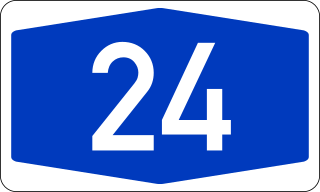
Bundesautobahn 24 is an autobahn in northern Germany that connects the large metropolitan regions of Hamburg and Berlin. It was one of the three transit access roads to West Berlin during the Cold War.
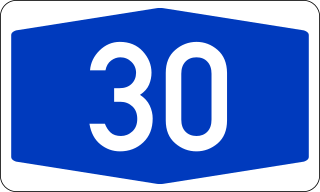
Bundesautobahn 30 is a highway in northwestern Germany. It runs from west to east, starting at the Dutch border. On the border it connects with the Dutch A1 motorway, hence, the A 30 is part of the important European connection Berlin - Amsterdam. It is an important connection from Hannover and Minden to Osnabrück, Münster and the Netherlands, and part of European Route E 30.

Bundesautobahn 15 is an autobahn in eastern Germany. It is one of the original Reichsautobahns and connected Breslau to Berlin, via Wroclaw (Breslau) and Görlitz. It connects Germany and Poland. A 15 is part of European route E36.
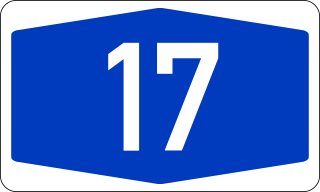
Bundesautobahn 17 is an autobahn in Saxony, south-eastern Germany. It links Dresden to the Czech border where the D8 continues to Prague. Construction began in 1998, and connects to the Prague. The road is a fairly new contribution to the German autobahn-system, with its first stretch opened in 2001 and the last in 2006.

Bundesautobahn 63 is an autobahn in southwestern Germany. It connects the Mainz area to Kaiserslautern and the A 6 and is therefore an important connection between the Rhine/Main and the Saar areas. It was constructed during the 1980/90s and finished 2004
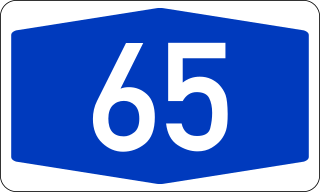
Bundesautobahn 65 is an autobahn in southwestern Germany. The newest section, between Neustadt and Landau, was opened only in the early 1990s.

Bundesautobahn 72 is a motorway in Germany. Construction of the autobahn started in the 1930s, but was halted by the outbreak of World War II. Due to the division of Germany, a part of the autobahn lay in ruins until after German reunification.
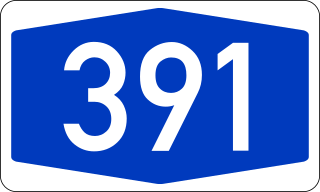
Bundesautobahn 391 is an autobahn in Braunschweig, also known as the Braunschweiger Westtangente. Its purpose is to connect the A 2 with the A 39, passing the city of Braunschweig on the western side.
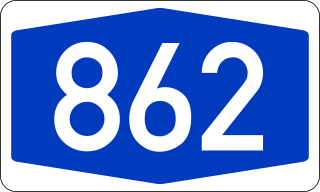
Bundesautobahn 862 was an autobahn in Germany. Its purpose was to connect the French Autoroute 36 with the German Bundesautobahn 5 via a bridge over the Rhine. At 400 metres, the A 862 was Germany's shortest autobahn; it was later integrated as an onramp into the A 5.
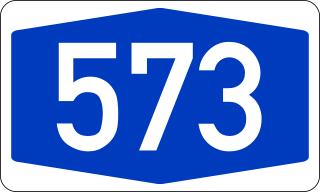
Bundesautobahn 573 is an autobahn in Germany. It leads from the A 61 through Bad Neuenahr and ends behind Bad Neuenahr at a provisional connection. The extension to Linz am Rhein with a bridge is planned, but will be realized as the Bundesstraße 266.

Bundesautobahn 643 is a 8.4-kilometer (5.2 mi) short autobahn in Germany. The motorway crosses the Rhine River, connecting the cities of Wiesbaden and Mainz, the capital cities of the German states of Hesse and Rhineland-Palatinate, respectively. It is one of two autobahns in Germany that connect two neighboring state capitals in only one exit.

Bundesautobahn 656 is an autobahn in Germany. It leads from Mannheim-Neckarau to Autobahnkreuz Heidelberg.
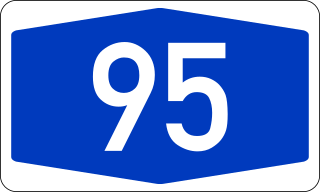
Bundesautobahn 95 is a motorway in southern Germany, supposed to connect Munich with Garmisch-Partenkirchen.

Bundesautobahn 255 is a short motorway in Hamburg, in north Germany. It connects the A 1 with the B 75 and B 4 at the Neue Elbbrücken.



























